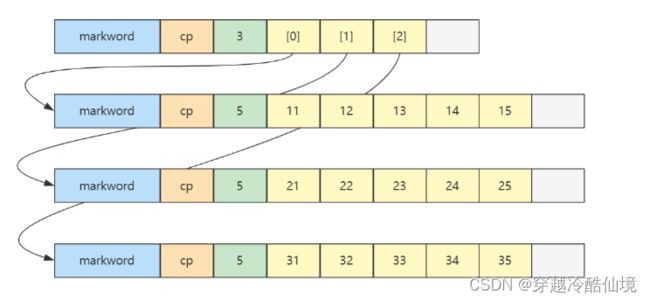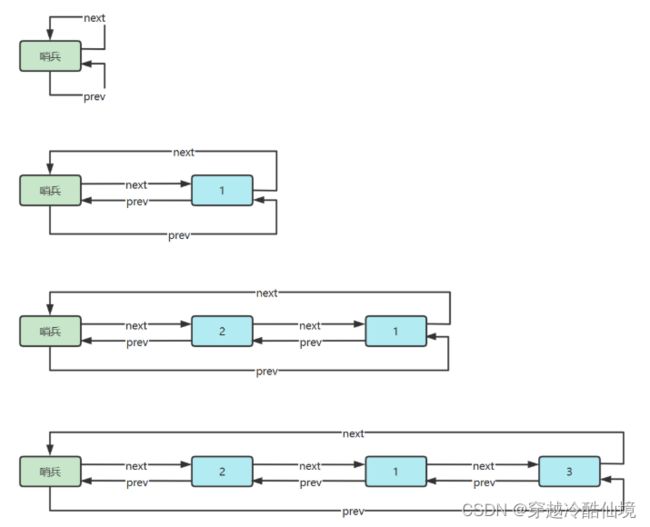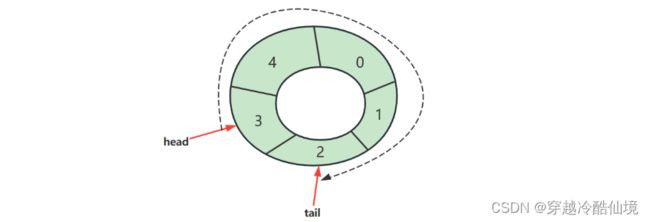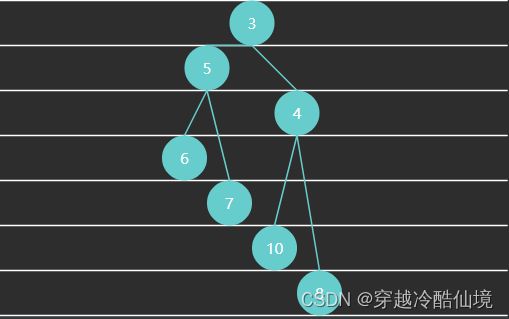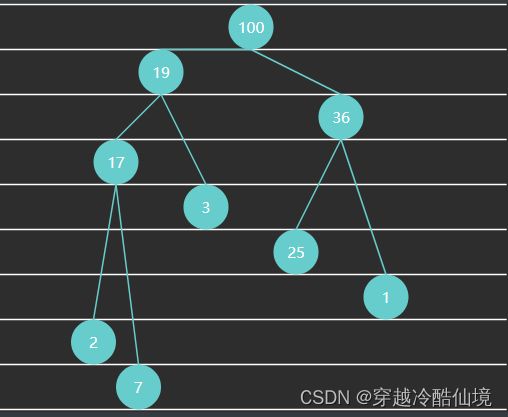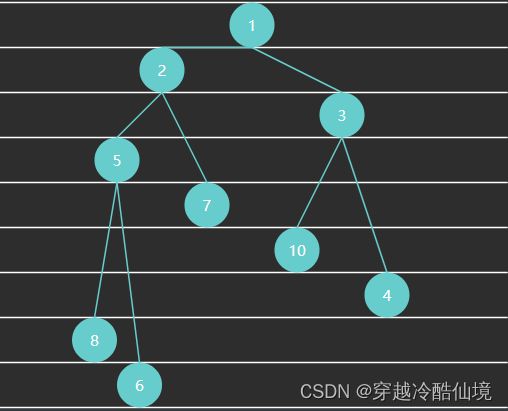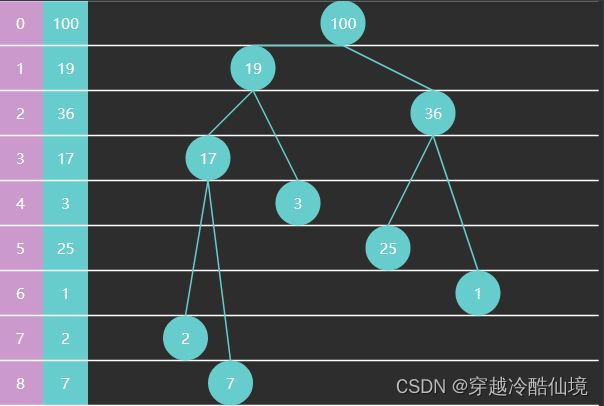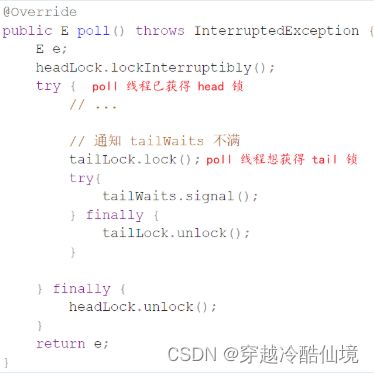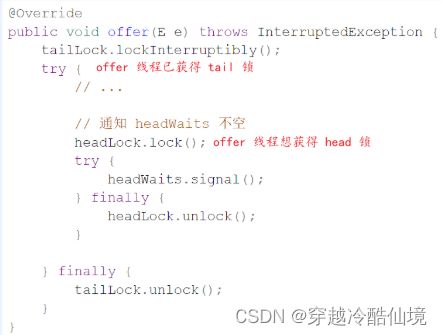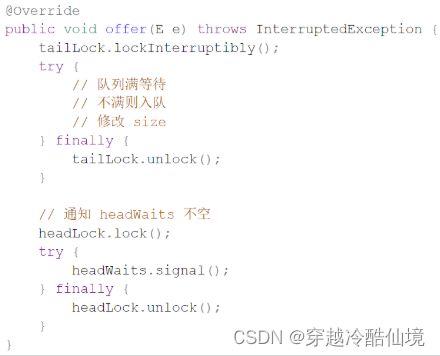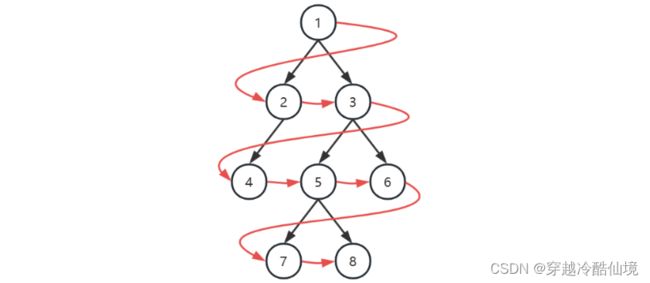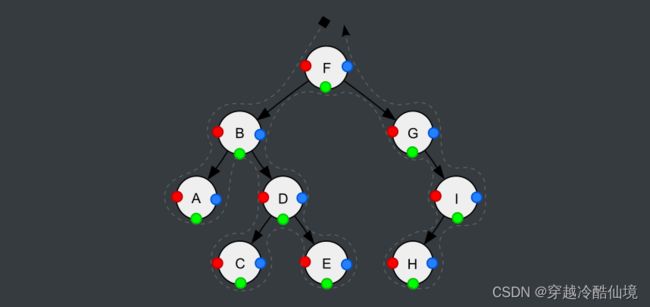基础数据结构
基础数据结构
1.数组
概述
定义
在计算机科学中,数组是由一组元素(值或变量)组成的数据结构,每个元素有至少一个索引或键来标识
因为数组内的元素是连续存储的,所以数组中元素的地址,可以通过其索引计算出来,例如:
int[] array = {1,2,3,4,5}知道了数组的数据起始地址 $BaseAddress$,就可以由公式 $BaseAddress + i * size$ 计算出索引 $i$ 元素的地址
-
$i$ 即索引,在 Java、C 等语言都是从 0 开始
-
$size$ 是每个元素占用字节,例如 $int$ 占 $4$,$double$ 占 $8$
小测试
byte[] array = {1,2,3,4,5}已知 array 的数据的起始地址是 0x7138f94c8,那么元素 3 的地址是什么?
答:0x7138f94c8 + 2 * 1 = 0x7138f94ca
空间占用
Java 中数组结构为
-
8 字节 markword
-
4 字节 class 指针(压缩 class 指针的情况)
-
4 字节 数组大小(决定了数组最大容量是 $2^{32}$)
-
数组元素 + 对齐字节(java 中所有对象大小都是 8 字节的整数倍12,不足的要用对齐字节补足)
例如
int[] array = {1, 2, 3, 4, 5};的大小为 40 个字节,组成如下
8 + 4 + 4 + 5*4 + 4(alignment)随机访问性能
即根据索引查找元素,时间复杂度是 $O(1)$
动态数组
java 版本
public class DynamicArray implements Iterable {
private int size = 0; // 逻辑大小
private int capacity = 8; // 容量
private int[] array = {};
/**
* 向最后位置 [size] 添加元素
*
* @param element 待添加元素
*/
public void addLast(int element) {
add(size, element);
}
/**
* 向 [0 .. size] 位置添加元素
*
* @param index 索引位置
* @param element 待添加元素
*/
public void add(int index, int element) {
checkAndGrow();
// 添加逻辑
if (index >= 0 && index < size) {
// 向后挪动, 空出待插入位置
System.arraycopy(array, index,
array, index + 1, size - index);
}
array[index] = element;
size++;
}
private void checkAndGrow() {
// 容量检查
if (size == 0) {
array = new int[capacity];
} else if (size == capacity) {
// 进行扩容, 1.5 1.618 2
capacity += capacity >> 1;
int[] newArray = new int[capacity];
System.arraycopy(array, 0,
newArray, 0, size);
array = newArray;
}
}
/**
* 从 [0 .. size) 范围删除元素
*
* @param index 索引位置
* @return 被删除元素
*/
public int remove(int index) { // [0..size)
int removed = array[index];
if (index < size - 1) {
// 向前挪动
System.arraycopy(array, index + 1,
array, index, size - index - 1);
}
size--;
return removed;
}
/**
* 查询元素
*
* @param index 索引位置, 在 [0..size) 区间内
* @return 该索引位置的元素
*/
public int get(int index) {
return array[index];
}
/**
* 遍历方法1
*
* @param consumer 遍历要执行的操作, 入参: 每个元素
*/
public void foreach(Consumer consumer) {
for (int i = 0; i < size; i++) {
// 提供 array[i]
// 返回 void
consumer.accept(array[i]);
}
}
/**
* 遍历方法2 - 迭代器遍历
*/
@Override
public Iterator iterator() {
return new Iterator() {
int i = 0;
@Override
public boolean hasNext() { // 有没有下一个元素
return i < size;
}
@Override
public Integer next() { // 返回当前元素,并移动到下一个元素
return array[i++];
}
};
}
/**
* 遍历方法3 - stream 遍历
*
* @return stream 流
*/
public IntStream stream() {
return IntStream.of(Arrays.copyOfRange(array, 0, size));
}
} 这些方法实现,都简化了 index 的有效性判断,假设输入的 index 都是合法的
插入或删除性能
头部位置,时间复杂度是 $O(n)$
中间位置,时间复杂度是 $O(n)$
尾部位置,时间复杂度是 $O(1)$(均摊来说)
二维数组
int[][] array = {
{11, 12, 13, 14, 15},
{21, 22, 23, 24, 25},
{31, 32, 33, 34, 35},
};内存图如下
-
二维数组占 32 个字节,其中 array[0],array[1],array[2] 三个元素分别保存了指向三个一维数组的引用
-
三个一维数组各占 40 个字节
-
它们在内层布局上是连续的
更一般的,对一个二维数组 $Arraym$
-
$m$ 是外层数组的长度,可以看作 row 行
-
$n$ 是内层数组的长度,可以看作 column 列
-
当访问 $Arrayi$,$0\leq i \lt m, 0\leq j \lt n$时,就相当于
-
先找到第 $i$ 个内层数组(行)
-
再找到此内层数组中第 $j$ 个元素(列)
-
小测试
Java 环境下(不考虑类指针和引用压缩,此为默认情况),有下面的二维数组
byte[][] array = {
{11, 12, 13, 14, 15},
{21, 22, 23, 24, 25},
{31, 32, 33, 34, 35},
};已知 array 对象起始地址是 0x1000,那么 23 这个元素的地址是什么?
答:
起始地址 0x1000
外层数组大小:16字节对象头 + 3元素 * 每个引用4字节 + 4 对齐字节 = 32 = 0x20
第一个内层数组大小:16字节对象头 + 5元素 * 每个byte1字节 + 3 对齐字节 = 24 = 0x18
第二个内层数组,16字节对象头 = 0x10,待查找元素索引为 2
最后结果 = 0x1000 + 0x20 + 0x18 + 0x10 + 2*1 = 0x104a
局部性原理
这里只讨论空间局部性
-
cpu 读取内存(速度慢)数据后,会将其放入高速缓存(速度快)当中,如果后来的计算再用到此数据,在缓存中能读到的话,就不必读内存了
-
缓存的最小存储单位是缓存行(cache line),一般是 64 bytes,一次读的数据少了不划算啊,因此最少读 64 bytes 填满一个缓存行,因此读入某个数据时也会读取其临近的数据,这就是所谓空间局部性
对效率的影响
比较下面 ij 和 ji 两个方法的执行效率
int rows = 1000000;
int columns = 14;
int[][] a = new int[rows][columns];
StopWatch sw = new StopWatch();
sw.start("ij");
ij(a, rows, columns);
sw.stop();
sw.start("ji");
ji(a, rows, columns);
sw.stop();
System.out.println(sw.prettyPrint());ij 方法
public static void ij(int[][] a, int rows, int columns) {
long sum = 0L;
for (int i = 0; i < rows; i++) {
for (int j = 0; j < columns; j++) {
sum += a[i][j];
}
}
System.out.println(sum);
}ji 方法
public static void ji(int[][] a, int rows, int columns) {
long sum = 0L;
for (int j = 0; j < columns; j++) {
for (int i = 0; i < rows; i++) {
sum += a[i][j];
}
}
System.out.println(sum);
}执行结果
0
0
StopWatch '': running time = 96283300 ns
---------------------------------------------
ns % Task name
---------------------------------------------
016196200 017% ij
080087100 083% ji可以看到 ij 的效率比 ji 快很多,为什么呢?
-
缓存是有限的,当新数据来了后,一些旧的缓存行数据就会被覆盖
-
如果不能充分利用缓存的数据,就会造成效率低下
以 ji 执行为例,第一次内循环要读入 $[0,0]$ 这条数据,由于局部性原理,读入 $[0,0]$ 的同时也读入了 $[0,1] ... [0,13]$,如图所示
但很遗憾,第二次内循环要的是 $[1,0]$ 这条数据,缓存中没有,于是再读入了下图的数据
这显然是一种浪费,因为 $[0,1] ... [0,13]$ 包括 $[1,1] ... [1,13]$ 这些数据虽然读入了缓存,却没有及时用上,而缓存的大小是有限的,等执行到第九次内循环时
缓存的第一行数据已经被新的数据 $[8,0] ... [8,13]$ 覆盖掉了,以后如果再想读,比如 $[0,1]$,又得到内存去读了
同理可以分析 ij 函数则能充分利用局部性原理加载到的缓存数据
举一反三
-
I/O 读写时同样可以体现局部性原理
-
数组可以充分利用局部性原理,那么链表呢?
答:链表不行,因为链表的元素并非相邻存储
越界检查
java 中对数组元素的读写都有越界检查,类似于下面的代码
bool is_within_bounds(int index) const
{
return 0 <= index && index < length();
}-
代码位置:
openjdk\src\hotspot\share\oops\arrayOop.hpp
只不过此检查代码,不需要由程序员自己来调用,JVM 会帮我们调用
2. 链表
概述
定义
在计算机科学中,链表是数据元素的线性集合,其每个元素都指向下一个元素,元素存储上并不连续
可以分类为
单向链表,每个元素只知道其下一个元素是谁
双向链表,每个元素知道其上一个元素和下一个元素
循环链表,通常的链表尾节点 tail 指向的都是 null,而循环链表的 tail 指向的是头节点 head
链表内还有一种特殊的节点称为哨兵(Sentinel)节点,也叫做哑元( Dummy)节点,它不存储数据,通常用作头尾,用来简化边界判断,如下图所示
随机访问性能
根据 index 查找,时间复杂度 $O(n)$
插入或删除性能
-
起始位置:$O(1)$
-
结束位置:如果已知 tail 尾节点是 $O(1)$,不知道 tail 尾节点是 $O(n)$
-
中间位置:根据 index 查找时间 + $O(1)$
单向链表
根据单向链表的定义,首先定义一个存储 value 和 next 指针的类 Node,和一个描述头部节点的引用
public class SinglyLinkedList {
private Node head; // 头部节点
private static class Node { // 节点类
int value;
Node next;
public Node(int value, Node next) {
this.value = value;
this.next = next;
}
}
}-
Node 定义为内部类,是为了对外隐藏实现细节,没必要让类的使用者关心 Node 结构
-
定义为 static 内部类,是因为 Node 不需要与 SinglyLinkedList 实例相关,多个 SinglyLinkedList实例能共用 Node 类定义
头部添加
public class SinglyLinkedList {
// ...
public void addFirst(int value) {
this.head = new Node(value, this.head);
}
}-
如果 this.head == null,新增节点指向 null,并作为新的 this.head
-
如果 this.head != null,新增节点指向原来的 this.head,并作为新的 this.head
-
注意赋值操作执行顺序是从右到左
-
while 遍历
public class SinglyLinkedList {
// ...
public void loop() {
for (Node curr = this.head; curr != null; curr = curr.next) {
// 做一些事
}
}
}以上两种遍历都可以把要做的事以 Consumer 函数的方式传递进来
-
Consumer 的规则是一个参数,无返回值,因此像 System.out::println 方法等都是 Consumer
-
调用 Consumer 时,将当前节点 curr.value 作为参数传递给它
迭代器遍历
public class SinglyLinkedList implements Iterable {
// ...
private class NodeIterator implements Iterator {
Node curr = head;
public boolean hasNext() {
return curr != null;
}
public Integer next() {
int value = curr.value;
curr = curr.next;
return value;
}
}
public Iterator iterator() {
return new NodeIterator();
}
} -
hasNext 用来判断是否还有必要调用 next
-
next 做两件事
-
返回当前节点的 value
-
指向下一个节点
-
-
NodeIterator 要定义为非 static 内部类,是因为它与 SinglyLinkedList 实例相关,是对某个 SinglyLinkedList 实例的迭代
递归遍历
public class SinglyLinkedList implements Iterable {
// ...
public void loop() {
recursion(this.head);
}
private void recursion(Node curr) {
if (curr == null) {
return;
}
// 前面做些事
recursion(curr.next);
// 后面做些事
}
} 尾部添加
public class SinglyLinkedList {
// ...
private Node findLast() {
if (this.head == null) {
return null;
}
Node curr;
for (curr = this.head; curr.next != null; ) {
curr = curr.next;
}
return curr;
}
public void addLast(int value) {
Node last = findLast();
if (last == null) {
addFirst(value);
return;
}
last.next = new Node(value, null);
}
}-
注意,找最后一个节点,终止条件是 curr.next == null
-
分成两个方法是为了代码清晰,而且 findLast() 之后还能复用
尾部添加多个
public class SinglyLinkedList {
// ...
public void addLast(int first, int... rest) {
Node sublist = new Node(first, null);
Node curr = sublist;
for (int value : rest) {
curr.next = new Node(value, null);
curr = curr.next;
}
Node last = findLast();
if (last == null) {
this.head = sublist;
return;
}
last.next = sublist;
}
}-
先串成一串 sublist
-
再作为一个整体添加
根据索引获取
public class SinglyLinkedList {
// ...
private Node findNode(int index) {
int i = 0;
for (Node curr = this.head; curr != null; curr = curr.next, i++) {
if (index == i) {
return curr;
}
}
return null;
}
private IllegalArgumentException illegalIndex(int index) {
return new IllegalArgumentException(String.format("index [%d] 不合法%n", index));
}
public int get(int index) {
Node node = findNode(index);
if (node != null) {
return node.value;
}
throw illegalIndex(index);
}
}同样,分方法可以实现复用
插入
public class SinglyLinkedList {
// ...
public void insert(int index, int value) {
if (index == 0) {
addFirst(value);
return;
}
Node prev = findNode(index - 1); // 找到上一个节点
if (prev == null) { // 找不到
throw illegalIndex(index);
}
prev.next = new Node(value, prev.next);
}
}插入包括下面的删除,都必须找到上一个节点
删除
public class SinglyLinkedList {
// ...
public void remove(int index) {
if (index == 0) {
if (this.head != null) {
this.head = this.head.next;
return;
} else {
throw illegalIndex(index);
}
}
Node prev = findNode(index - 1);
Node curr;
if (prev != null && (curr = prev.next) != null) {
prev.next = curr.next;
} else {
throw illegalIndex(index);
}
}
}-
第一个 if 块对应着 removeFirst 情况
-
最后一个 if 块对应着至少得两个节点的情况
-
不仅仅判断上一个节点非空,还要保证当前节点非空
-
单向链表(带哨兵)
观察之前单向链表的实现,发现每个方法内几乎都有判断是不是 head 这样的代码,能不能简化呢?
用一个不参与数据存储的特殊 Node 作为哨兵,它一般被称为哨兵或哑元,拥有哨兵节点的链表称为带头链表
public class SinglyLinkedListSentinel {
// ...
private Node head = new Node(Integer.MIN_VALUE, null);
}-
具体存什么值无所谓,因为不会用到它的值
加入哨兵节点后,代码会变得比较简单,先看几个工具方法
public class SinglyLinkedListSentinel {
// ...
// 根据索引获取节点
private Node findNode(int index) {
int i = -1;
for (Node curr = this.head; curr != null; curr = curr.next, i++) {
if (i == index) {
return curr;
}
}
return null;
}
// 获取最后一个节点
private Node findLast() {
Node curr;
for (curr = this.head; curr.next != null; ) {
curr = curr.next;
}
return curr;
}
}-
findNode 与之前类似,只是 i 初始值设置为 -1 对应哨兵,实际传入的 index 也是 $[-1, \infty)$
-
findLast 绝不会返回 null 了,就算没有其它节点,也会返回哨兵作为最后一个节点
这样,代码简化为
public class SinglyLinkedListSentinel {
// ...
public void addLast(int value) {
Node last = findLast();
/*
改动前
if (last == null) {
this.head = new Node(value, null);
return;
}
*/
last.next = new Node(value, null);
}
public void insert(int index, int value) {
/*
改动前
if (index == 0) {
this.head = new Node(value, this.head);
return;
}
*/
// index 传入 0 时,返回的是哨兵
Node prev = findNode(index - 1);
if (prev != null) {
prev.next = new Node(value, prev.next);
} else {
throw illegalIndex(index);
}
}
public void remove(int index) {
/*
改动前
if (index == 0) {
if (this.head != null) {
this.head = this.head.next;
return;
} else {
throw illegalIndex(index);
}
}
*/
// index 传入 0 时,返回的是哨兵
Node prev = findNode(index - 1);
Node curr;
if (prev != null && (curr = prev.next) != null) {
prev.next = curr.next;
} else {
throw illegalIndex(index);
}
}
public void addFirst(int value) {
/*
改动前
this.head = new Node(value, this.head);
*/
this.head.next = new Node(value, this.head.next);
// 也可以视为 insert 的特例, 即 insert(0, value);
}
}对于删除,前面说了【最后一个 if 块对应着至少得两个节点的情况】,现在有了哨兵,就凑足了两个节点
双向链表(带哨兵)
public class DoublyLinkedListSentinel implements Iterable {
private final Node head;
private final Node tail;
public DoublyLinkedListSentinel() {
head = new Node(null, 666, null);
tail = new Node(null, 888, null);
head.next = tail;
tail.prev = head;
}
private Node findNode(int index) {
int i = -1;
for (Node p = head; p != tail; p = p.next, i++) {
if (i == index) {
return p;
}
}
return null;
}
public void addFirst(int value) {
insert(0, value);
}
public void removeFirst() {
remove(0);
}
public void addLast(int value) {
Node prev = tail.prev;
Node added = new Node(prev, value, tail);
prev.next = added;
tail.prev = added;
}
public void removeLast() {
Node removed = tail.prev;
if (removed == head) {
throw illegalIndex(0);
}
Node prev = removed.prev;
prev.next = tail;
tail.prev = prev;
}
public void insert(int index, int value) {
Node prev = findNode(index - 1);
if (prev == null) {
throw illegalIndex(index);
}
Node next = prev.next;
Node inserted = new Node(prev, value, next);
prev.next = inserted;
next.prev = inserted;
}
public void remove(int index) {
Node prev = findNode(index - 1);
if (prev == null) {
throw illegalIndex(index);
}
Node removed = prev.next;
if (removed == tail) {
throw illegalIndex(index);
}
Node next = removed.next;
prev.next = next;
next.prev = prev;
}
private IllegalArgumentException illegalIndex(int index) {
return new IllegalArgumentException(
String.format("index [%d] 不合法%n", index));
}
@Override
public Iterator iterator() {
return new Iterator() {
Node p = head.next;
@Override
public boolean hasNext() {
return p != tail;
}
@Override
public Integer next() {
int value = p.value;
p = p.next;
return value;
}
};
}
static class Node {
Node prev;
int value;
Node next;
public Node(Node prev, int value, Node next) {
this.prev = prev;
this.value = value;
this.next = next;
}
}
} 环形链表(带哨兵)
双向环形链表带哨兵,这时哨兵既作为头,也作为尾
参考实现
public class DoublyLinkedListSentinel implements Iterable {
@Override
public Iterator iterator() {
return new Iterator<>() {
Node p = sentinel.next;
@Override
public boolean hasNext() {
return p != sentinel;
}
@Override
public Integer next() {
int value = p.value;
p = p.next;
return value;
}
};
}
static class Node {
Node prev;
int value;
Node next;
public Node(Node prev, int value, Node next) {
this.prev = prev;
this.value = value;
this.next = next;
}
}
private final Node sentinel = new Node(null, -1, null); // 哨兵
public DoublyLinkedListSentinel() {
sentinel.next = sentinel;
sentinel.prev = sentinel;
}
/**
* 添加到第一个
* @param value 待添加值
*/
public void addFirst(int value) {
Node next = sentinel.next;
Node prev = sentinel;
Node added = new Node(prev, value, next);
prev.next = added;
next.prev = added;
}
/**
* 添加到最后一个
* @param value 待添加值
*/
public void addLast(int value) {
Node prev = sentinel.prev;
Node next = sentinel;
Node added = new Node(prev, value, next);
prev.next = added;
next.prev = added;
}
/**
* 删除第一个
*/
public void removeFirst() {
Node removed = sentinel.next;
if (removed == sentinel) {
throw new IllegalArgumentException("非法");
}
Node a = sentinel;
Node b = removed.next;
a.next = b;
b.prev = a;
}
/**
* 删除最后一个
*/
public void removeLast() {
Node removed = sentinel.prev;
if (removed == sentinel) {
throw new IllegalArgumentException("非法");
}
Node a = removed.prev;
Node b = sentinel;
a.next = b;
b.prev = a;
}
/**
* 根据值删除节点
* 假定 value 在链表中作为 key, 有唯一性
* @param value 待删除值
*/
public void removeByValue(int value) {
Node removed = findNodeByValue(value);
if (removed != null) {
Node prev = removed.prev;
Node next = removed.next;
prev.next = next;
next.prev = prev;
}
}
private Node findNodeByValue(int value) {
Node p = sentinel.next;
while (p != sentinel) {
if (p.value == value) {
return p;
}
p = p.next;
}
return null;
}
} 3. 递归
概述
定义
计算机科学中,递归是一种解决计算问题的方法,其中解决方案取决于同一类问题的更小子集
比如单链表递归遍历的例子:
void f(Node node) {
if(node == null) {
return;
}
println("before:" + node.value)
f(node.next);
println("after:" + node.value)
}说明:
-
自己调用自己,如果说每个函数对应着一种解决方案,自己调用自己意味着解决方案是一样的(有规律的)
-
每次调用,函数处理的数据会较上次缩减(子集),而且最后会缩减至无需继续递归
-
内层函数调用(子集处理)完成,外层函数才能算调用完成
原理
假设链表中有 3 个节点,value 分别为 1,2,3,以上代码的执行流程就类似于下面的伪码
// 1 -> 2 -> 3 -> null f(1)
void f(Node node = 1) {
println("before:" + node.value) // 1
void f(Node node = 2) {
println("before:" + node.value) // 2
void f(Node node = 3) {
println("before:" + node.value) // 3
void f(Node node = null) {
if(node == null) {
return;
}
}
println("after:" + node.value) // 3
}
println("after:" + node.value) // 2
}
println("after:" + node.value) // 1
}思路
-
确定能否使用递归求解
-
推导出递推关系,即父问题与子问题的关系,以及递归的结束条件
例如之前遍历链表的递推关系为
-
深入到最里层叫做递
-
从最里层出来叫做归
-
在递的过程中,外层函数内的局部变量(以及方法参数)并未消失,归的时候还可以用到
单路递归 Single Recursion
E01. 阶乘
用递归方法求阶乘
-
阶乘的定义 $n!= 1⋅2⋅3⋯(n-2)⋅(n-1)⋅n$,其中 $n$ 为自然数,当然 $0! = 1$
-
递推关系
代码
private static int f(int n) {
if (n == 1) {
return 1;
}
return n * f(n - 1);
}拆解伪码如下,假设 n 初始值为 3
f(int n = 3) { // 解决不了,递
return 3 * f(int n = 2) { // 解决不了,继续递
return 2 * f(int n = 1) {
if (n == 1) { // 可以解决, 开始归
return 1;
}
}
}
}E02. 反向打印字符串
用递归反向打印字符串,n 为字符在整个字符串 str 中的索引位置
-
递:n 从 0 开始,每次 n + 1,一直递到 n == str.length() - 1
-
归:从 n == str.length() 开始归,从归打印,自然是逆序的
递推关系
代码为
public static void reversePrint(String str, int index) {
if (index == str.length()) {
return;
}
reversePrint(str, index + 1);
System.out.println(str.charAt(index));
}拆解伪码如下,假设字符串为 "abc"
void reversePrint(String str, int index = 0) {
void reversePrint(String str, int index = 1) {
void reversePrint(String str, int index = 2) {
void reversePrint(String str, int index = 3) {
if (index == str.length()) {
return; // 开始归
}
}
System.out.println(str.charAt(index)); // 打印 c
}
System.out.println(str.charAt(index)); // 打印 b
}
System.out.println(str.charAt(index)); // 打印 a
}多路递归 Multi Recursion
E01. 斐波那契数列
-
之前的例子是每个递归函数只包含一个自身的调用,这称之为 single recursion
-
如果每个递归函数例包含多个自身调用,称之为 multi recursion
递推关系
下面的表格列出了数列的前几项
实现
public static int f(int n) {
if (n == 0) {
return 0;
}
if (n == 1) {
return 1;
}
return f(n - 1) + f(n - 2);
}
时间复杂度
-
递归的次数也符合斐波那契规律,$2 * f(n+1)-1$
-
时间复杂度推导过程
-
斐波那契通项公式 $f(n) = \frac{1}{\sqrt{5}}*({\frac{1+\sqrt{5}}{2}}^n - {\frac{1-\sqrt{5}}{2}}^n)$
-
简化为:$f(n) = \frac{1}{2.236}*({1.618}^n - {(-0.618)}^n)$
-
带入递归次数公式 $2\frac{1}{2.236}({1.618}^{n+1} - {(-0.618)}^{n+1})-1$
-
时间复杂度为 $\Theta(1.618^n)$
-
更多 Fibonacci 参考8910
以上时间复杂度分析,未考虑大数相加的因素
变体1 - 兔子问题8
-
第一个月,有一对未成熟的兔子(黑色,注意图中个头较小)
-
第二个月,它们成熟
-
第三个月,它们能产下一对新的小兔子(蓝色)
-
所有兔子遵循相同规律,求第 $n$ 个月的兔子数
分析
兔子问题如何与斐波那契联系起来呢?设第 n 个月兔子数为 $f(n)$
-
$f(n)$ = 上个月兔子数 + 新生的小兔子数
-
而【新生的小兔子数】实际就是【上个月成熟的兔子数】
-
因为需要一个月兔子就成熟,所以【上个月成熟的兔子数】也就是【上上个月的兔子数】
-
上个月兔子数,即 $f(n-1)$
-
上上个月的兔子数,即 $f(n-2)$
因此本质还是斐波那契数列,只是从其第一项开始
变体2 - 青蛙爬楼梯
-
楼梯有 $n$ 阶
-
青蛙要爬到楼顶,可以一次跳一阶,也可以一次跳两阶
-
只能向上跳,问有多少种跳法
分析
| n | 跳法 | 规律 |
| 1 | (1) | 暂时看不出 |
| 2 | (1,1) (2) | 暂时看不出 |
| 3 | (1,1,1) (1,2) (2,1) | 暂时看不出 |
| 4 | (1,1,1,1) (1,2,1) (2,1,1) (1,1,2) (2,2) | 最后一跳,跳一个台阶的,基于f(3) 最后一跳,跳两个台阶的,基于f(2) |
| 5 | ... | ... |
-
因此本质上还是斐波那契数列,只是从其第二项开始
-
对应 leetcode 题目 70. 爬楼梯 - 力扣(LeetCode)
递归优化-记忆法
可以看到(颜色相同的是重复的):
-
$f(3)$ 重复了 2 次
-
$f(2)$ 重复了 3 次
-
$f(1)$ 重复了 5 次
-
$f(0)$ 重复了 3 次
随着 $n$ 的增大,重复次数非常可观,如何优化呢?
Memoization 记忆法(也称备忘录)是一种优化技术,通过存储函数调用结果(通常比较昂贵),当再次出现相同的输入(子问题)时,就能实现加速效果,改进后的代码
public static void main(String[] args) {
int n = 13;
int[] cache = new int[n + 1];
Arrays.fill(cache, -1);
cache[0] = 0;
cache[1] = 1;
System.out.println(f(cache, n));
}
public static int f(int[] cache, int n) {
if (cache[n] != -1) {
return cache[n];
}
cache[n] = f(cache, n - 1) + f(cache, n - 2);
return cache[n];
}优化后的图示,只要结果被缓存,就不会执行其子问题
-
改进后的时间复杂度为 $O(n)$
-
请自行验证改进后的效果
-
请自行分析改进后的空间复杂度
注意
记忆法是动态规划的一种情况,强调的是自顶向下的解决
记忆法的本质是空间换时间
递归优化-尾递归
爆栈
用递归做 $n + (n-1) + (n-2) ... + 1$
public static long sum(long n) {
if (n == 1) {
return 1;
}
return n + sum(n - 1);
}在我的机器上 $n = 12000$ 时,爆栈了
Exception in thread "main" java.lang.StackOverflowError
at Test.sum(Test.java:10)
at Test.sum(Test.java:10)
at Test.sum(Test.java:10)
at Test.sum(Test.java:10)
at Test.sum(Test.java:10)
...为什么呢?
-
每次方法调用是需要消耗一定的栈内存的,这些内存用来存储方法参数、方法内局部变量、返回地址等等
-
方法调用占用的内存需要等到方法结束时才会释放
-
而递归调用我们之前讲过,不到最深不会回头,最内层方法没完成之前,外层方法都结束不了
-
例如,$sum(3)$ 这个方法内有个需要执行 $3 + sum(2)$,$sum(2)$ 没返回前,加号前面的 $3$ 不能释放
-
看下面伪码
-
long sum(long n = 3) {
return 3 + long sum(long n = 2) {
return 2 + long sum(long n = 1) {
return 1;
}
}
}尾调用
如果函数的最后一步是调用一个函数,那么称为尾调用,例如
function a() {
return b()
}下面三段代码不能叫做尾调用
function a() {
const c = b()
return c
}因为最后一步并非调用函数
function a() {
return b() + 1
}最后一步执行的是加法
function a(x) {
return b() + x
}最后一步执行的是加法
一些语言11的编译器能够对尾调用做优化,例如
function a() {
// 做前面的事
return b()
}
function b() {
// 做前面的事
return c()
}
function c() {
return 1000
}
a()没优化之前的伪码
function a() {
return function b() {
return function c() {
return 1000
}
}
}优化后伪码如下
a()
b()
c()为何尾递归才能优化?
调用 a 时
-
a 返回时发现:没什么可留给 b 的,将来返回的结果 b 提供就可以了,用不着我 a 了,我的内存就可以释放
调用 b 时
-
b 返回时发现:没什么可留给 c 的,将来返回的结果 c 提供就可以了,用不着我 b 了,我的内存就可以释放
如果调用 a 时
-
不是尾调用,例如 return b() + 1,那么 a 就不能提前结束,因为它还得利用 b 的结果做加法
尾递归
尾递归是尾调用的一种特例,也就是最后一步执行的是同一个函数
尾递归避免爆栈
安装 Scala
Scala 入门
object Main {
def main(args: Array[String]): Unit = {
println("Hello Scala")
}
}
-
Scala 是 java 的近亲,java 中的类都可以拿来重用
-
类型是放在变量后面的
-
Unit 表示无返回值,类似于 void
-
不需要以分号作为结尾,当然加上也对
还是先写一个会爆栈的函数
def sum(n: Long): Long = {
if (n == 1) {
return 1
}
return n + sum(n - 1)
}Scala 最后一行代码若作为返回值,可以省略 return
不出所料,在 $n = 11000$ 时,还是出了异常
println(sum(11000))
Exception in thread "main" java.lang.StackOverflowError
at Main$.sum(Main.scala:25)
at Main$.sum(Main.scala:25)
at Main$.sum(Main.scala:25)
at Main$.sum(Main.scala:25)
...这是因为以上代码,还不是尾调用,要想成为尾调用,那么:
-
最后一行代码,必须是一次函数调用
-
内层函数必须摆脱与外层函数的关系,内层函数执行后不依赖于外层的变量或常量
def sum(n: Long): Long = {
if (n == 1) {
return 1
}
return n + sum(n - 1) // 依赖于外层函数的 n 变量
}如何让它执行后就摆脱对 n 的依赖呢?
-
不能等递归回来再做加法,那样就必须保留外层的 n
-
把 n 当做内层函数的一个参数传进去,这时 n 就属于内层函数了
-
传参时就完成累加, 不必等回来时累加
sum(n - 1, n + 累加器)改写后代码如下
@tailrec
def sum(n: Long, accumulator: Long): Long = {
if (n == 1) {
return 1 + accumulator
}
return sum(n - 1, n + accumulator)
}-
accumulator 作为累加器
-
@tailrec 注解是 scala 提供的,用来检查方法是否符合尾递归
-
这回 sum(10000000, 0) 也没有问题,打印 50000005000000
执行流程如下,以伪码表示 $sum(4, 0)$
// 首次调用
def sum(n = 4, accumulator = 0): Long = {
return sum(4 - 1, 4 + accumulator)
}
// 接下来调用内层 sum, 传参时就完成了累加, 不必等回来时累加,当内层 sum 调用后,外层 sum 空间没必要保留
def sum(n = 3, accumulator = 4): Long = {
return sum(3 - 1, 3 + accumulator)
}
// 继续调用内层 sum
def sum(n = 2, accumulator = 7): Long = {
return sum(2 - 1, 2 + accumulator)
}
// 继续调用内层 sum, 这是最后的 sum 调用完就返回最后结果 10, 前面所有其它 sum 的空间早已释放
def sum(n = 1, accumulator = 9): Long = {
if (1 == 1) {
return 1 + accumulator
}
}本质上,尾递归优化是将函数的递归调用,变成了函数的循环调用
改循环避免爆栈
public static void main(String[] args) {
long n = 100000000;
long sum = 0;
for (long i = n; i >= 1; i--) {
sum += i;
}
System.out.println(sum);
}递归时间复杂度-Master theorem14
若有递归式
其中
-
$T(n)$ 是问题的运行时间,$n$ 是数据规模
-
$a$ 是子问题个数
-
$T(\frac{n}{b})$ 是子问题运行时间,每个子问题被拆成原问题数据规模的 $\frac{n}{b}$
-
$f(n)$ 是除递归外执行的计算
令 $x = \log{b}{a}$,即 $x = \log{子问题缩小倍数}{子问题个数}$
那么
例1
$T(n) = 2T(\frac{n}{2}) + n^4$
-
此时 $x = 1 < 4$,由后者决定整个时间复杂度 $\Theta(n^4)$
-
如果觉得对数不好算,可以换为求【$b$ 的几次方能等于 $a$】
例2
$T(n) = T(\frac{7n}{10}) + n$
-
$a=1, b=\frac{10}{7}, x=0, c=1$
-
此时 $x = 0 < 1$,由后者决定整个时间复杂度 $\Theta(n)$
例3
$T(n) = 16T(\frac{n}{4}) + n^2$
-
$a=16, b=4, x=2, c=2$
-
此时 $x=2 = c$,时间复杂度 $\Theta(n^2 \log{n})$
例4
$T(n)=7T(\frac{n}{3}) + n^2$
-
$a=7, b=3, x=1.?, c=2$
-
此时 $x = \log_{3}{7} < 2$,由后者决定整个时间复杂度 $\Theta(n^2)$
例5
$T(n) = 7T(\frac{n}{2}) + n^2$
-
$a=7, b=2, x=2.?, c=2$
-
此时 $x = log_2{7} > 2$,由前者决定整个时间复杂度 $\Theta(n^{\log_2{7}})$
例6
$T(n) = 2T(\frac{n}{4}) + \sqrt{n}$
-
$a=2, b=4, x = 0.5, c=0.5$
-
此时 $x = 0.5 = c$,时间复杂度 $\Theta(\sqrt{n}\ \log{n})$
例7. 二分查找递归
int f(int[] a, int target, int i, int j) {
if (i > j) {
return -1;
}
int m = (i + j) >>> 1;
if (target < a[m]) {
return f(a, target, i, m - 1);
} else if (a[m] < target) {
return f(a, target, m + 1, j);
} else {
return m;
}
}
-
子问题个数 $a = 1$
-
子问题数据规模缩小倍数 $b = 2$
-
除递归外执行的计算是常数级 $c=0$
$T(n) = T(\frac{n}{2}) + n^0$
-
此时 $x=0 = c$,时间复杂度 $\Theta(\log{n})$
例8. 归并排序递归
void split(B[], i, j, A[])
{
if (j - i <= 1)
return;
m = (i + j) / 2;
// 递归
split(A, i, m, B);
split(A, m, j, B);
// 合并
merge(B, i, m, j, A);
}-
子问题个数 $a=2$
-
子问题数据规模缩小倍数 $b=2$
-
除递归外,主要时间花在合并上,它可以用 $f(n) = n$ 表示
$T(n) = 2T(\frac{n}{2}) + n$
-
此时 $x=1=c$,时间复杂度 $\Theta(n\log{n})$
例9. 快速排序递归
algorithm quicksort(A, lo, hi) is
if lo >= hi || lo < 0 then
return
// 分区
p := partition(A, lo, hi)
// 递归
quicksort(A, lo, p - 1)
quicksort(A, p + 1, hi) -
子问题个数 $a=2$
-
子问题数据规模缩小倍数
-
如果分区分的好,$b=2$
-
如果分区没分好,例如分区1 的数据是 0,分区 2 的数据是 $n-1$
-
-
除递归外,主要时间花在分区上,它可以用 $f(n) = n$ 表示
情况1 - 分区分的好
$T(n) = 2T(\frac{n}{2}) + n$
-
此时 $x=1=c$,时间复杂度 $\Theta(n\log{n})$
情况2 - 分区没分好
$T(n) = T(n-1) + T(1) + n$
-
此时不能用主定理求解
递归时间复杂度-展开求解
像下面的递归式,都不能用主定理求解
例1 - 递归求和
long sum(long n) {
if (n == 1) {
return 1;
}
return n + sum(n - 1);
}$T(n) = T(n-1) + c$,$T(1) = c$
下面为展开过程
$T(n) = T(n-2) + c + c$
$T(n) = T(n-3) + c + c + c$
...
$T(n) = T(n-(n-1)) + (n-1)c$
-
其中 $T(n-(n-1))$ 即 $T(1)$
-
带入求得 $T(n) = c + (n-1)c = nc$
时间复杂度为 $O(n)$
例2 - 递归冒泡排序
void bubble(int[] a, int high) {
if(0 == high) {
return;
}
for (int i = 0; i < high; i++) {
if (a[i] > a[i + 1]) {
swap(a, i, i + 1);
}
}
bubble(a, high - 1);
}$T(n) = T(n-1) + n$,$T(1) = c$
下面为展开过程
$T(n) = T(n-2) + (n-1) + n$
$T(n) = T(n-3) + (n-2) + (n-1) + n$
...
$T(n) = T(1) + 2 + ... + n = T(1) + (n-1)\frac{2+n}{2} = c + \frac{n^2}{2} + \frac{n}{2} -1$
时间复杂度 $O(n^2)$
注:
等差数列求和为 $个数*\frac{\vert首项-末项\vert}{2}$
例3 - 递归快排
快速排序分区没分好的极端情况
$T(n) = T(n-1) + T(1) + n$,$T(1) = c$
$T(n) = T(n-1) + c + n$
下面为展开过程
$T(n) = T(n-2) + c + (n-1) + c + n$
$T(n) = T(n-3) + c + (n-2) + c + (n-1) + c + n$
...
$T(n) = T(n-(n-1)) + (n-1)c + 2+...+n = \frac{n^2}{2} + \frac{2cn+n}{2} -1$
时间复杂度 $O(n^2)$
不会推导的同学可以进入 Wolfram|Alpha: Computational Intelligence
-
例1 输入 f(n) = f(n - 1) + c, f(1) = c
-
例2 输入 f(n) = f(n - 1) + n, f(1) = c
-
例3 输入 f(n) = f(n - 1) + n + c, f(1) = c
4. 队列
概述
计算机科学中,queue 是以顺序的方式维护的一组数据集合,在一端添加数据,从另一端移除数据。习惯来说,添加的一端称为尾,移除的一端称为头,就如同生活中的排队买商品
先定义一个简化的队列接口
public interface Queue {
/**
* 向队列尾插入值
* @param value 待插入值
* @return 插入成功返回 true, 插入失败返回 false
*/
boolean offer(E value);
/**
* 从对列头获取值, 并移除
* @return 如果队列非空返回对头值, 否则返回 null
*/
E poll();
/**
* 从对列头获取值, 不移除
* @return 如果队列非空返回对头值, 否则返回 null
*/
E peek();
/**
* 检查队列是否为空
* @return 空返回 true, 否则返回 false
*/
boolean isEmpty();
/**
* 检查队列是否已满
* @return 满返回 true, 否则返回 false
*/
boolean isFull();
} 链表实现
下面以单向环形带哨兵链表方式来实现队列
代码
public class LinkedListQueue
implements Queue, Iterable {
private static class Node {
E value;
Node next;
public Node(E value, Node next) {
this.value = value;
this.next = next;
}
}
private Node head = new Node<>(null, null);
private Node tail = head;
private int size = 0;
private int capacity = Integer.MAX_VALUE;
{
tail.next = head;
}
public LinkedListQueue() {
}
public LinkedListQueue(int capacity) {
this.capacity = capacity;
}
@Override
public boolean offer(E value) {
if (isFull()) {
return false;
}
Node added = new Node<>(value, head);
tail.next = added;
tail = added;
size++;
return true;
}
@Override
public E poll() {
if (isEmpty()) {
return null;
}
Node first = head.next;
head.next = first.next;
if (first == tail) {
tail = head;
}
size--;
return first.value;
}
@Override
public E peek() {
if (isEmpty()) {
return null;
}
return head.next.value;
}
@Override
public boolean isEmpty() {
return head == tail;
}
@Override
public boolean isFull() {
return size == capacity;
}
@Override
public Iterator iterator() {
return new Iterator() {
Node p = head.next;
@Override
public boolean hasNext() {
return p != head;
}
@Override
public E next() {
E value = p.value;
p = p.next;
return value;
}
};
}
} 环形数组实现
好处
-
对比普通数组,起点和终点更为自由,不用考虑数据移动
-
“环”意味着不会存在【越界】问题
-
数组性能更佳
-
环形数组比较适合实现有界队列、RingBuffer 等
下标计算
例如,数组长度是 5,当前位置是 3 ,向前走 2 步,此时下标为 $(3 + 2)\%5 = 0$
注意:
如果 step = 1,也就是一次走一步,可以在 >= length 时重置为 0 即可
-
cur 当前指针位置
-
step 前进步数
-
length 数组长度
判断空
判断满
满之后的策略可以根据业务需求决定
-
例如我们要实现的环形队列,满之后就拒绝入队
代码
public class ArrayQueue implements Queue, Iterable{
private int head = 0;
private int tail = 0;
private final E[] array;
private final int length;
@SuppressWarnings("all")
public ArrayQueue(int capacity) {
length = capacity + 1;
array = (E[]) new Object[length];
}
@Override
public boolean offer(E value) {
if (isFull()) {
return false;
}
array[tail] = value;
tail = (tail + 1) % length;
return true;
}
@Override
public E poll() {
if (isEmpty()) {
return null;
}
E value = array[head];
head = (head + 1) % length;
return value;
}
@Override
public E peek() {
if (isEmpty()) {
return null;
}
return array[head];
}
@Override
public boolean isEmpty() {
return tail == head;
}
@Override
public boolean isFull() {
return (tail + 1) % length == head;
}
@Override
public Iterator iterator() {
return new Iterator() {
int p = head;
@Override
public boolean hasNext() {
return p != tail;
}
@Override
public E next() {
E value = array[p];
p = (p + 1) % array.length;
return value;
}
};
}
} 判断空、满方法2
引入 size
public class ArrayQueue2 implements Queue, Iterable {
private int head = 0;
private int tail = 0;
private final E[] array;
private final int capacity;
private int size = 0;
@SuppressWarnings("all")
public ArrayQueue2(int capacity) {
this.capacity = capacity;
array = (E[]) new Object[capacity];
}
@Override
public boolean offer(E value) {
if (isFull()) {
return false;
}
array[tail] = value;
tail = (tail + 1) % capacity;
size++;
return true;
}
@Override
public E poll() {
if (isEmpty()) {
return null;
}
E value = array[head];
head = (head + 1) % capacity;
size--;
return value;
}
@Override
public E peek() {
if (isEmpty()) {
return null;
}
return array[head];
}
@Override
public boolean isEmpty() {
return size == 0;
}
@Override
public boolean isFull() {
return size == capacity;
}
@Override
public Iterator iterator() {
return new Iterator() {
int p = head;
@Override
public boolean hasNext() {
return p != tail;
}
@Override
public E next() {
E value = array[p];
p = (p + 1) % capacity;
return value;
}
};
}
} 判断空、满方法3
-
head 和 tail 不断递增,用到索引时,再用它们进行计算,两个问题
-
如何保证 head 和 tail 自增超过正整数最大值的正确性
-
如何让取模运算性能更高
-
-
答案:让 capacity 为 2 的幂
public class ArrayQueue3 implements Queue, Iterable {
private int head = 0;
private int tail = 0;
private final E[] array;
private final int capacity;
@SuppressWarnings("all")
public ArrayQueue3(int capacity) {
if ((capacity & capacity - 1) != 0) {
throw new IllegalArgumentException("capacity 必须为 2 的幂");
}
this.capacity = capacity;
array = (E[]) new Object[this.capacity];
}
@Override
public boolean offer(E value) {
if (isFull()) {
return false;
}
array[tail & capacity - 1] = value;
tail++;
return true;
}
@Override
public E poll() {
if (isEmpty()) {
return null;
}
E value = array[head & capacity - 1];
head++;
return value;
}
@Override
public E peek() {
if (isEmpty()) {
return null;
}
return array[head & capacity - 1];
}
@Override
public boolean isEmpty() {
return tail - head == 0;
}
@Override
public boolean isFull() {
return tail - head == capacity;
}
@Override
public Iterator iterator() {
return new Iterator() {
int p = head;
@Override
public boolean hasNext() {
return p != tail;
}
@Override
public E next() {
E value = array[p & capacity - 1];
p++;
return value;
}
};
}
} 5. 栈
概述
计算机科学中,stack 是一种线性的数据结构,只能在其一端添加数据和移除数据。习惯来说,这一端称之为栈顶,另一端不能操作数据的称之为栈底,就如同生活中的一摞书
先提供一个栈接口
public interface Stack {
/**
* 向栈顶压入元素
* @param value 待压入值
* @return 压入成功返回 true, 否则返回 false
*/
boolean push(E value);
/**
* 从栈顶弹出元素
* @return 栈非空返回栈顶元素, 栈为空返回 null
*/
E pop();
/**
* 返回栈顶元素, 不弹出
* @return 栈非空返回栈顶元素, 栈为空返回 null
*/
E peek();
/**
* 判断栈是否为空
* @return 空返回 true, 否则返回 false
*/
boolean isEmpty();
/**
* 判断栈是否已满
* @return 满返回 true, 否则返回 false
*/
boolean isFull();
} 链表实现
public class LinkedListStack implements Stack, Iterable {
private final int capacity;
private int size;
private final Node head = new Node<>(null, null);
public LinkedListStack(int capacity) {
this.capacity = capacity;
}
@Override
public boolean push(E value) {
if (isFull()) {
return false;
}
head.next = new Node<>(value, head.next);
size++;
return true;
}
@Override
public E pop() {
if (isEmpty()) {
return null;
}
Node first = head.next;
head.next = first.next;
size--;
return first.value;
}
@Override
public E peek() {
if (isEmpty()) {
return null;
}
return head.next.value;
}
@Override
public boolean isEmpty() {
return head.next == null;
}
@Override
public boolean isFull() {
return size == capacity;
}
@Override
public Iterator iterator() {
return new Iterator() {
Node p = head.next;
@Override
public boolean hasNext() {
return p != null;
}
@Override
public E next() {
E value = p.value;
p = p.next;
return value;
}
};
}
static class Node {
E value;
Node next;
public Node(E value, Node next) {
this.value = value;
this.next = next;
}
}
}
数组实现
public class ArrayStack implements Stack, Iterable{
private final E[] array;
private int top = 0;
@SuppressWarnings("all")
public ArrayStack(int capacity) {
this.array = (E[]) new Object[capacity];
}
@Override
public boolean push(E value) {
if (isFull()) {
return false;
}
array[top++] = value;
return true;
}
@Override
public E pop() {
if (isEmpty()) {
return null;
}
return array[--top];
}
@Override
public E peek() {
if (isEmpty()) {
return null;
}
return array[top-1];
}
@Override
public boolean isEmpty() {
return top == 0;
}
@Override
public boolean isFull() {
return top == array.length;
}
@Override
public Iterator iterator() {
return new Iterator() {
int p = top;
@Override
public boolean hasNext() {
return p > 0;
}
@Override
public E next() {
return array[--p];
}
};
}
} 应用
模拟如下方法调用
public static void main(String[] args) {
System.out.println("main1");
System.out.println("main2");
method1();
method2();
System.out.println("main3");
}
public static void method1() {
System.out.println("method1");
method3();
}
public static void method2() {
System.out.println("method2");
}
public static void method3() {
System.out.println("method3");
}模拟代码
public class CPU {
static class Frame {
int exit;
public Frame(int exit) {
this.exit = exit;
}
}
static int pc = 1; // 模拟程序计数器 Program counter
static ArrayStack stack = new ArrayStack<>(100); // 模拟方法调用栈
public static void main(String[] args) {
stack.push(new Frame(-1));
while (!stack.isEmpty()) {
switch (pc) {
case 1 -> {
System.out.println("main1");
pc++;
}
case 2 -> {
System.out.println("main2");
pc++;
}
case 3 -> {
stack.push(new Frame(pc + 1));
pc = 100;
}
case 4 -> {
stack.push(new Frame(pc + 1));
pc = 200;
}
case 5 -> {
System.out.println("main3");
pc = stack.pop().exit;
}
case 100 -> {
System.out.println("method1");
stack.push(new Frame(pc + 1));
pc = 300;
}
case 101 -> {
pc = stack.pop().exit;
}
case 200 -> {
System.out.println("method2");
pc = stack.pop().exit;
}
case 300 -> {
System.out.println("method3");
pc = stack.pop().exit;
}
}
}
}
}6. 双端队列
概述
双端队列、队列、栈对比
| 定义 | 特点 | |
| 队列 | 一端删除(头)另一端添加(尾) | First In First Out |
| 栈 | 一端删除和添加(顶) | Last In First Out |
| 双端队列 | 两端都可以删除、添加 | |
| 优先级队列 | 优先级高者先出队 | |
| 延时队列 | 根据延时时间确定优先级 | |
| 并发非阻塞队列 | 队列空或满时不阻塞 | |
| 并发阻塞队列 | 队列空时删除阻塞、队列满时添加阻塞 |
接口定义
public interface Deque {
boolean offerFirst(E e);
boolean offerLast(E e);
E pollFirst();
E pollLast();
E peekFirst();
E peekLast();
boolean isEmpty();
boolean isFull();
}
链表实现
/**
* 基于环形链表的双端队列
* @param 元素类型
*/
public class LinkedListDeque implements Deque, Iterable {
@Override
public boolean offerFirst(E e) {
if (isFull()) {
return false;
}
size++;
Node a = sentinel;
Node b = sentinel.next;
Node offered = new Node<>(a, e, b);
a.next = offered;
b.prev = offered;
return true;
}
@Override
public boolean offerLast(E e) {
if (isFull()) {
return false;
}
size++;
Node a = sentinel.prev;
Node b = sentinel;
Node offered = new Node<>(a, e, b);
a.next = offered;
b.prev = offered;
return true;
}
@Override
public E pollFirst() {
if (isEmpty()) {
return null;
}
Node a = sentinel;
Node polled = sentinel.next;
Node b = polled.next;
a.next = b;
b.prev = a;
size--;
return polled.value;
}
@Override
public E pollLast() {
if (isEmpty()) {
return null;
}
Node polled = sentinel.prev;
Node a = polled.prev;
Node b = sentinel;
a.next = b;
b.prev = a;
size--;
return polled.value;
}
@Override
public E peekFirst() {
if (isEmpty()) {
return null;
}
return sentinel.next.value;
}
@Override
public E peekLast() {
if (isEmpty()) {
return null;
}
return sentinel.prev.value;
}
@Override
public boolean isEmpty() {
return size == 0;
}
@Override
public boolean isFull() {
return size == capacity;
}
@Override
public Iterator iterator() {
return new Iterator() {
Node p = sentinel.next;
@Override
public boolean hasNext() {
return p != sentinel;
}
@Override
public E next() {
E value = p.value;
p = p.next;
return value;
}
};
}
static class Node {
Node prev;
E value;
Node next;
public Node(Node prev, E value, Node next) {
this.prev = prev;
this.value = value;
this.next = next;
}
}
Node sentinel = new Node<>(null, null, null);
int capacity;
int size;
public LinkedListDeque(int capacity) {
sentinel.next = sentinel;
sentinel.prev = sentinel;
this.capacity = capacity;
}
} 数组实现
/**
* 基于循环数组实现, 特点
*
* - tail 停下来的位置不存储, 会浪费一个位置
*
* @param
*/
public class ArrayDeque1 implements Deque, Iterable {
/*
h
t
0 1 2 3
b a
*/
@Override
public boolean offerFirst(E e) {
if (isFull()) {
return false;
}
head = dec(head, array.length);
array[head] = e;
return true;
}
@Override
public boolean offerLast(E e) {
if (isFull()) {
return false;
}
array[tail] = e;
tail = inc(tail, array.length);
return true;
}
@Override
public E pollFirst() {
if (isEmpty()) {
return null;
}
E e = array[head];
array[head] = null;
head = inc(head, array.length);
return e;
}
@Override
public E pollLast() {
if (isEmpty()) {
return null;
}
tail = dec(tail, array.length);
E e = array[tail];
array[tail] = null;
return e;
}
@Override
public E peekFirst() {
if (isEmpty()) {
return null;
}
return array[head];
}
@Override
public E peekLast() {
if (isEmpty()) {
return null;
}
return array[dec(tail, array.length)];
}
@Override
public boolean isEmpty() {
return head == tail;
}
@Override
public boolean isFull() {
if (tail > head) {
return tail - head == array.length - 1;
} else if (tail < head) {
return head - tail == 1;
} else {
return false;
}
}
@Override
public Iterator iterator() {
return new Iterator() {
int p = head;
@Override
public boolean hasNext() {
return p != tail;
}
@Override
public E next() {
E e = array[p];
p = inc(p, array.length);
return e;
}
};
}
E[] array;
int head;
int tail;
@SuppressWarnings("unchecked")
public ArrayDeque1(int capacity) {
array = (E[]) new Object[capacity + 1];
}
static int inc(int i, int length) {
if (i + 1 >= length) {
return 0;
}
return i + 1;
}
static int dec(int i, int length) {
if (i - 1 < 0) {
return length - 1;
}
return i - 1;
}
} 数组实现中,如果存储的是基本类型,那么无需考虑内存释放,例如
但如果存储的是引用类型,应当设置该位置的引用为 null,以便内存及时释放
7. 优先级队列
无序数组实现
要点
-
入队保持顺序
-
出队前找到优先级最高的出队,相当于一次选择排序
public class PriorityQueue1 implements Queue {
Priority[] array;
int size;
public PriorityQueue1(int capacity) {
array = new Priority[capacity];
}
@Override // O(1)
public boolean offer(E e) {
if (isFull()) {
return false;
}
array[size++] = e;
return true;
}
// 返回优先级最高的索引值
private int selectMax() {
int max = 0;
for (int i = 1; i < size; i++) {
if (array[i].priority() > array[max].priority()) {
max = i;
}
}
return max;
}
@Override // O(n)
public E poll() {
if (isEmpty()) {
return null;
}
int max = selectMax();
E e = (E) array[max];
remove(max);
return e;
}
private void remove(int index) {
if (index < size - 1) {
System.arraycopy(array, index + 1,
array, index, size - 1 - index);
}
array[--size] = null; // help GC
}
@Override
public E peek() {
if (isEmpty()) {
return null;
}
int max = selectMax();
return (E) array[max];
}
@Override
public boolean isEmpty() {
return size == 0;
}
@Override
public boolean isFull() {
return size == array.length;
}
} 有序数组实现
要点
-
入队后排好序,优先级最高的排列在尾部
-
出队只需删除尾部元素即可
public class PriorityQueue2 implements Queue {
Priority[] array;
int size;
public PriorityQueue2(int capacity) {
array = new Priority[capacity];
}
// O(n)
@Override
public boolean offer(E e) {
if (isFull()) {
return false;
}
insert(e);
size++;
return true;
}
// 一轮插入排序
private void insert(E e) {
int i = size - 1;
while (i >= 0 && array[i].priority() > e.priority()) {
array[i + 1] = array[i];
i--;
}
array[i + 1] = e;
}
// O(1)
@Override
public E poll() {
if (isEmpty()) {
return null;
}
E e = (E) array[size - 1];
array[--size] = null; // help GC
return e;
}
@Override
public E peek() {
if (isEmpty()) {
return null;
}
return (E) array[size - 1];
}
@Override
public boolean isEmpty() {
return size == 0;
}
@Override
public boolean isFull() {
return size == array.length;
}
} 堆实现
计算机科学中,堆是一种基于树的数据结构,通常用完全二叉树实现。堆的特性如下
-
在大顶堆中,任意节点 C 与它的父节点 P 符合 $P.value \geq C.value$
-
而小顶堆中,任意节点 C 与它的父节点 P 符合 $P.value \leq C.value$
-
最顶层的节点(没有父亲)称之为 root 根节点
例1 - 满二叉树(Full Binary Tree)特点:每一层都是填满的
例2 - 完全二叉树(Complete Binary Tree)特点:最后一层可能未填满,靠左对齐
例3 - 大顶堆
例4 - 小顶堆
完全二叉树可以使用数组来表示
特征
-
如果从索引 0 开始存储节点数据
-
节点 $i$ 的父节点为 $floor((i-1)/2)$,当 $i>0$ 时
-
节点 $i$ 的左子节点为 $2i+1$,右子节点为 $2i+2$,当然它们得 $< size$
-
-
如果从索引 1 开始存储节点数据
-
节点 $i$ 的父节点为 $floor(i/2)$,当 $i > 1$ 时
-
节点 $i$ 的左子节点为 $2i$,右子节点为 $2i+1$,同样得 $< size$
-
代码
public class PriorityQueue4 implements Queue {
Priority[] array;
int size;
public PriorityQueue4(int capacity) {
array = new Priority[capacity];
}
@Override
public boolean offer(E offered) {
if (isFull()) {
return false;
}
int child = size++;
int parent = (child - 1) / 2;
while (child > 0 && offered.priority() > array[parent].priority()) {
array[child] = array[parent];
child = parent;
parent = (child - 1) / 2;
}
array[child] = offered;
return true;
}
private void swap(int i, int j) {
Priority t = array[i];
array[i] = array[j];
array[j] = t;
}
@Override
public E poll() {
if (isEmpty()) {
return null;
}
swap(0, size - 1);
size--;
Priority e = array[size];
array[size] = null;
shiftDown(0);
return (E) e;
}
void shiftDown(int parent) {
int left = 2 * parent + 1;
int right = left + 1;
int max = parent;
if (left < size && array[left].priority() > array[max].priority()) {
max = left;
}
if (right < size && array[right].priority() > array[max].priority()) {
max = right;
}
if (max != parent) {
swap(max, parent);
shiftDown(max);
}
}
@Override
public E peek() {
if (isEmpty()) {
return null;
}
return (E) array[0];
}
@Override
public boolean isEmpty() {
return size == 0;
}
@Override
public boolean isFull() {
return size == array.length;
}
} 8. 阻塞队列
之前的队列在很多场景下都不能很好地工作,例如
-
大部分场景要求分离向队列放入(生产者)、从队列拿出(消费者)两个角色、它们得由不同的线程来担当,而之前的实现根本没有考虑线程安全问题
-
队列为空,那么在之前的实现里会返回 null,如果就是硬要拿到一个元素呢?只能不断循环尝试
-
队列为满,那么再之前的实现里会返回 false,如果就是硬要塞入一个元素呢?只能不断循环尝试
因此我们需要解决的问题有
-
用锁保证线程安全
-
用条件变量让等待非空线程与等待不满线程进入等待状态,而不是不断循环尝试,让 CPU 空转
有基友对线程安全还没有足够的认识,下面举一个反例,两个线程都要执行入队操作(几乎在同一时刻)
public class TestThreadUnsafe {
private final String[] array = new String[10];
private int tail = 0;
public void offer(String e) {
array[tail] = e;
tail++;
}
@Override
public String toString() {
return Arrays.toString(array);
}
public static void main(String[] args) {
TestThreadUnsafe queue = new TestThreadUnsafe();
new Thread(()-> queue.offer("e1"), "t1").start();
new Thread(()-> queue.offer("e2"), "t2").start();
}
}执行的时间序列如下,假设初始状态 tail = 0,在执行过程中由于 CPU 在两个线程之间切换,造成了指令交错
| 线程1 | 线程2 | 说明 |
| array[tail]=e1 | 线程1 向 tail 位置加入 e1 这个元素,但还没来得及执行 tail++ | |
| array[tail]=e2 | 线程2 向 tail 位置加入 e2 这个元素,覆盖掉了 e1 | |
| tail++ | tail 自增为1 | |
| tail++ | tail 自增为2 | |
| 最后状态 tail 为 2,数组为 [e2, null, null ...] |
糟糕的是,由于指令交错的顺序不同,得到的结果不止以上一种,宏观上造成混乱的效果
单锁实现
Java 中要防止代码段交错执行,需要使用锁,有两种选择
-
synchronized 代码块,属于关键字级别提供锁保护,功能少
-
ReentrantLock 类,功能丰富
以 ReentrantLock 为例
ReentrantLock lock = new ReentrantLock();
public void offer(String e) {
lock.lockInterruptibly();
try {
array[tail] = e;
tail++;
} finally {
lock.unlock();
}
}
只要两个线程执行上段代码时,锁对象是同一个,就能保证 try 块内的代码的执行不会出现指令交错现象,即执行顺序只可能是下面两种情况之一
| 线程1 | 线程2 | 说明 |
| lock.lockInterruptibly() | t1对锁对象上锁 | |
| array[tail]=e1 | ||
| lock.lockInterruptibly() | 即使 CPU 切换到线程2,但由于t1已经对该对象上锁,因此线程2卡在这儿进不去 | |
| tail++ | 切换回线程1 执行后续代码 | |
| lock.unlock() | 线程1 解锁 | |
| array[tail]=e2 | 线程2 此时才能获得锁,执行它的代码 | |
| tail++ |
-
另一种情况是线程2 先获得锁,线程1 被挡在外面
-
要明白保护的本质,本例中是保护的是 tail 位置读写的安全
事情还没有完,上面的例子是队列还没有放满的情况,考虑下面的代码(这回锁同时保护了 tail 和 size 的读写安全)
ReentrantLock lock = new ReentrantLock();
int size = 0;
public void offer(String e) {
lock.lockInterruptibly();
try {
if(isFull()) {
// 满了怎么办?
}
array[tail] = e;
tail++;
size++;
} finally {
lock.unlock();
}
}
private boolean isFull() {
return size == array.length;
}之前是返回 false 表示添加失败,前面分析过想达到这么一种效果:
-
在队列满时,不是立刻返回,而是当前线程进入等待
-
什么时候队列不满了,再唤醒这个等待的线程,从上次的代码处继续向下运行
ReentrantLock 可以配合条件变量来实现,代码进化为
ReentrantLock lock = new ReentrantLock();
Condition tailWaits = lock.newCondition(); // 条件变量
int size = 0;
public void offer(String e) {
lock.lockInterruptibly();
try {
while (isFull()) {
tailWaits.await(); // 当队列满时, 当前线程进入 tailWaits 等待
}
array[tail] = e;
tail++;
size++;
} finally {
lock.unlock();
}
}
private boolean isFull() {
return size == array.length;
}-
条件变量底层也是个队列,用来存储这些需要等待的线程,当队列满了,就会将 offer 线程加入条件队列,并暂时释放锁
-
将来我们的队列如果不满了(由 poll 线程那边得知)可以调用 tailWaits.signal() 来唤醒 tailWaits 中首个等待的线程,被唤醒的线程会再次抢到锁,从上次 await 处继续向下运行
思考为何要用 while 而不是 if,设队列容量是 3
| 操作前 | offer(4) | offer(5) | poll() | 操作后 | |
| [1 2 3] | 队列满,进入tailWaits 等待 | [1 2 3] | |||
| [1 2 3] | 取走 1,队列不满,唤醒线程 | [2 3] | |||
| [2 3] | 抢先获得锁,发现不满,放入 5 | [2 3 5] | |||
| [2 3 5] | 从上次等待处直接向下执行 |
|
关键点:
-
从 tailWaits 中唤醒的线程,会与新来的 offer 的线程争抢锁,谁能抢到是不一定的,如果后者先抢到,就会导致条件又发生变化
-
这种情况称之为虚假唤醒,唤醒后应该重新检查条件,看是不是得重新进入等待
最后的实现代码
/**
* 单锁实现
* @param 元素类型
*/
public class BlockingQueue1 implements BlockingQueue {
private final E[] array;
private int head = 0;
private int tail = 0;
private int size = 0; // 元素个数
@SuppressWarnings("all")
public BlockingQueue1(int capacity) {
array = (E[]) new Object[capacity];
}
ReentrantLock lock = new ReentrantLock();
Condition tailWaits = lock.newCondition();
Condition headWaits = lock.newCondition();
@Override
public void offer(E e) throws InterruptedException {
lock.lockInterruptibly();
try {
while (isFull()) {
tailWaits.await();
}
array[tail] = e;
if (++tail == array.length) {
tail = 0;
}
size++;
headWaits.signal();
} finally {
lock.unlock();
}
}
@Override
public void offer(E e, long timeout) throws InterruptedException {
lock.lockInterruptibly();
try {
long t = TimeUnit.MILLISECONDS.toNanos(timeout);
while (isFull()) {
if (t <= 0) {
return;
}
t = tailWaits.awaitNanos(t);
}
array[tail] = e;
if (++tail == array.length) {
tail = 0;
}
size++;
headWaits.signal();
} finally {
lock.unlock();
}
}
@Override
public E poll() throws InterruptedException {
lock.lockInterruptibly();
try {
while (isEmpty()) {
headWaits.await();
}
E e = array[head];
array[head] = null; // help GC
if (++head == array.length) {
head = 0;
}
size--;
tailWaits.signal();
return e;
} finally {
lock.unlock();
}
}
private boolean isEmpty() {
return size == 0;
}
private boolean isFull() {
return size == array.length;
}
} -
public void offer(E e, long timeout) throws InterruptedException 是带超时的版本,可以只等待一段时间,而不是永久等下去,类似的 poll 也可以做带超时的版本,这个留给大家了
注意
JDK 中 BlockingQueue 接口的方法命名与我的示例有些差异
方法 offer(E e) 是非阻塞的实现,阻塞实现方法为 put(E e)
方法 poll() 是非阻塞的实现,阻塞实现方法为 take()
双锁实现
单锁的缺点在于:
-
生产和消费几乎是不冲突的,唯一冲突的是生产者和消费者它们有可能同时修改 size
-
冲突的主要是生产者之间:多个 offer 线程修改 tail
-
冲突的还有消费者之间:多个 poll 线程修改 head
如果希望进一步提高性能,可以用两把锁
-
一把锁保护 tail
-
另一把锁保护 head
ReentrantLock headLock = new ReentrantLock(); // 保护 head 的锁
Condition headWaits = headLock.newCondition(); // 队列空时,需要等待的线程集合
ReentrantLock tailLock = new ReentrantLock(); // 保护 tail 的锁
Condition tailWaits = tailLock.newCondition(); // 队列满时,需要等待的线程集合先看看 offer 方法的初步实现
上面代码的缺点是 size 并不受 tailLock 保护,tailLock 与 headLock 是两把不同的锁,并不能实现互斥的效果。因此,size 需要用下面的代码保证原子性
AtomicInteger size = new AtomicInteger(0); // 保护 size 的原子变量
size.getAndIncrement(); // 自增
size.getAndDecrement(); // 自减代码修改为
@Override
public void offer(E e) throws InterruptedException {
tailLock.lockInterruptibly();
try {
// 队列满等待
while (isFull()) {
tailWaits.await();
}
// 不满则入队
array[tail] = e;
if (++tail == array.length) {
tail = 0;
}
// 修改 size
size.getAndIncrement();
} finally {
tailLock.unlock();
}
}对称地,可以写出 poll 方法
@Override
public E poll() throws InterruptedException {
E e;
headLock.lockInterruptibly();
try {
// 队列空等待
while (isEmpty()) {
headWaits.await();
}
// 不空则出队
e = array[head];
if (++head == array.length) {
head = 0;
}
// 修改 size
size.getAndDecrement();
} finally {
headLock.unlock();
}
return e;
}下面来看一个难题,就是如何通知 headWaits 和 tailWaits 中等待的线程,比如 poll 方法拿走一个元素,通知 tailWaits:我拿走一个,不满了噢,你们可以放了,因此代码改为
@Override
public E poll() throws InterruptedException {
E e;
headLock.lockInterruptibly();
try {
// 队列空等待
while (isEmpty()) {
headWaits.await();
}
// 不空则出队
e = array[head];
if (++head == array.length) {
head = 0;
}
// 修改 size
size.getAndDecrement();
// 通知 tailWaits 不满(有问题)
tailWaits.signal();
} finally {
headLock.unlock();
}
return e;
}问题在于要使用这些条件变量的 await(), signal() 等方法需要先获得与之关联的锁,上面的代码若直接运行会出现以下错误
java.lang.IllegalMonitorStateException那有基友说,加上锁不就行了吗,于是写出了下面的代码
两把锁这么嵌套使用,非常容易出现死锁,如下所示
性能还可以进一步提升
-
代码调整后 offer 并没有同时获取 tailLock 和 headLock 两把锁,因此两次加锁之间会有空隙,这个空隙内可能有其它的 offer 线程添加了更多的元素,那么这些线程都要执行 signal(),通知 poll 线程队列非空吗?
-
每次调用 signal() 都需要这些 offer 线程先获得 headLock 锁,成本较高,要想法减少 offer 线程获得 headLock 锁的次数
-
可以加一个条件:当 offer 增加前队列为空,即从 0 变化到不空,才由此 offer 线程来通知 headWaits,其它情况不归它管
-
-
队列从 0 变化到不空,会唤醒一个等待的 poll 线程,这个线程被唤醒后,肯定能拿到 headLock 锁,因此它具备了唤醒 headWaits 上其它 poll 线程的先决条件。如果检查出此时有其它 offer 线程新增了元素(不空,但不是从0变化而来),那么不妨由此 poll 线程来唤醒其它 poll 线程
这个技巧被称之为级联通知(cascading notifies),类似的原因
-
在 poll 时队列从满变化到不满,才由此 poll 线程来唤醒一个等待的 offer 线程,目的也是为了减少 poll 线程对 tailLock 上锁次数,剩下等待的 offer 线程由这个 offer 线程间接唤醒
最终的代码为
public class BlockingQueue2 implements BlockingQueue {
private final E[] array;
private int head = 0;
private int tail = 0;
private final AtomicInteger size = new AtomicInteger(0);
ReentrantLock headLock = new ReentrantLock();
Condition headWaits = headLock.newCondition();
ReentrantLock tailLock = new ReentrantLock();
Condition tailWaits = tailLock.newCondition();
public BlockingQueue2(int capacity) {
this.array = (E[]) new Object[capacity];
}
@Override
public void offer(E e) throws InterruptedException {
int c;
tailLock.lockInterruptibly();
try {
while (isFull()) {
tailWaits.await();
}
array[tail] = e;
if (++tail == array.length) {
tail = 0;
}
c = size.getAndIncrement();
// a. 队列不满, 但不是从满->不满, 由此offer线程唤醒其它offer线程
if (c + 1 < array.length) {
tailWaits.signal();
}
} finally {
tailLock.unlock();
}
// b. 从0->不空, 由此offer线程唤醒等待的poll线程
if (c == 0) {
headLock.lock();
try {
headWaits.signal();
} finally {
headLock.unlock();
}
}
}
@Override
public E poll() throws InterruptedException {
E e;
int c;
headLock.lockInterruptibly();
try {
while (isEmpty()) {
headWaits.await();
}
e = array[head];
if (++head == array.length) {
head = 0;
}
c = size.getAndDecrement();
// b. 队列不空, 但不是从0变化到不空,由此poll线程通知其它poll线程
if (c > 1) {
headWaits.signal();
}
} finally {
headLock.unlock();
}
// a. 从满->不满, 由此poll线程唤醒等待的offer线程
if (c == array.length) {
tailLock.lock();
try {
tailWaits.signal();
} finally {
tailLock.unlock();
}
}
return e;
}
private boolean isEmpty() {
return size.get() == 0;
}
private boolean isFull() {
return size.get() == array.length;
}
} 双锁实现的非常精巧,据说作者 Doug Lea 花了一年的时间才完善了此段代码
9. 堆
以大顶堆为例,相对于之前的优先级队列,增加了堆化等方法
public class MaxHeap {
int[] array;
int size;
public MaxHeap(int capacity) {
this.array = new int[capacity];
}
/**
* 获取堆顶元素
*
* @return 堆顶元素
*/
public int peek() {
return array[0];
}
/**
* 删除堆顶元素
*
* @return 堆顶元素
*/
public int poll() {
int top = array[0];
swap(0, size - 1);
size--;
down(0);
return top;
}
/**
* 删除指定索引处元素
*
* @param index 索引
* @return 被删除元素
*/
public int poll(int index) {
int deleted = array[index];
swap(index, size - 1);
size--;
down(index);
return deleted;
}
/**
* 替换堆顶元素
* @param replaced 新元素
*/
public void replace(int replaced) {
array[0] = replaced;
down(0);
}
/**
* 堆的尾部添加元素
*
* @param offered 新元素
* @return 是否添加成功
*/
public boolean offer(int offered) {
if (size == array.length) {
return false;
}
up(offered);
size++;
return true;
}
// 将 offered 元素上浮: 直至 offered 小于父元素或到堆顶
private void up(int offered) {
int child = size;
while (child > 0) {
int parent = (child - 1) / 2;
if (offered > array[parent]) {
array[child] = array[parent];
} else {
break;
}
child = parent;
}
array[child] = offered;
}
public MaxHeap(int[] array) {
this.array = array;
this.size = array.length;
heapify();
}
// 建堆
private void heapify() {
// 如何找到最后这个非叶子节点 size / 2 - 1
for (int i = size / 2 - 1; i >= 0; i--) {
down(i);
}
}
// 将 parent 索引处的元素下潜: 与两个孩子较大者交换, 直至没孩子或孩子没它大
private void down(int parent) {
int left = parent * 2 + 1;
int right = left + 1;
int max = parent;
if (left < size && array[left] > array[max]) {
max = left;
}
if (right < size && array[right] > array[max]) {
max = right;
}
if (max != parent) { // 找到了更大的孩子
swap(max, parent);
down(max);
}
}
// 交换两个索引处的元素
private void swap(int i, int j) {
int t = array[i];
array[i] = array[j];
array[j] = t;
}
public static void main(String[] args) {
int[] array = {1, 2, 3, 4, 5, 6, 7};
MaxHeap maxHeap = new MaxHeap(array);
System.out.println(Arrays.toString(maxHeap.array));
}
}建堆
Floyd 建堆算法作者(也是之前龟兔赛跑判环作者):
-
找到最后一个非叶子节点
-
从后向前,对每个节点执行下潜
一些规律
-
一棵满二叉树节点个数为 $2^h-1$,如下例中高度 $h=3$ 节点数是 $2^3-1=7$
-
非叶子节点范围为 $[0, size/2-1]$
算法时间复杂度分析
下面看交换次数的推导:设节点高度为 3
| 本层节点数 | 高度 | 下潜最多交换次数(高度-1) | |
| 4567 这层 | 4 | 1 | 0 |
| 23这层 | 2 | 2 | 1 |
| 1这层 | 1 | 3 | 2 |
每一层的交换次数为:$节点个数*此节点交换次数$,总的交换次数为
即
在 Wolfram|Alpha: Computational Intelligence 输入
Sum[\(40)Divide[Power[2,x],Power[2,i]]*\(40)i-1\(41)\(41),{i,1,x}]推导出
其中 $2^h \approx n$,$h \approx \log_2{n}$,因此有时间复杂度 $O(n)$
10. 二叉树
二叉树是这么一种树状结构:每个节点最多有两个孩子,左孩子和右孩子
重要的二叉树结构
-
完全二叉树(complete binary tree)是一种二叉树结构,除最后一层以外,每一层都必须填满,填充时要遵从先左后右
-
平衡二叉树(balance binary tree)是一种二叉树结构,其中每个节点的左右子树高度相差不超过 1
存储
存储方式分为两种
-
定义树节点与左、右孩子引用(TreeNode)
-
使用数组,前面讲堆时用过,若以 0 作为树的根,索引可以通过如下方式计算
-
父 = floor((子 - 1) / 2)
-
左孩子 = 父 * 2 + 1
-
右孩子 = 父 * 2 + 2
-
遍历
遍历也分为两种
-
广度优先遍历(Breadth-first order):尽可能先访问距离根最近的节点,也称为层序遍历
-
深度优先遍历(Depth-first order):对于二叉树,可以进一步分成三种(要深入到叶子节点)
-
pre-order 前序遍历,对于每一棵子树,先访问该节点,然后是左子树,最后是右子树
-
in-order 中序遍历,对于每一棵子树,先访问左子树,然后是该节点,最后是右子树
-
post-order 后序遍历,对于每一棵子树,先访问左子树,然后是右子树,最后是该节点
-
广度优先
-
初始化,将根节点加入队列
-
循环处理队列中每个节点,直至队列为空
-
每次循环内处理节点后,将它的孩子节点(即下一层的节点)加入队列
注意
-
以上用队列来层序遍历是针对 TreeNode 这种方式表示的二叉树
-
对于数组表现的二叉树,则直接遍历数组即可,自然为层序遍历的顺序
深度优先
递归实现
/**
* 前序遍历
* @param node 节点
*/
static void preOrder(TreeNode node) {
if (node == null) {
return;
}
System.out.print(node.val + "\t"); // 值
preOrder(node.left); // 左
preOrder(node.right); // 右
}
/**
* 中序遍历
* @param node 节点
*/
static void inOrder(TreeNode node) {
if (node == null) {
return;
}
inOrder(node.left); // 左
System.out.print(node.val + "\t"); // 值
inOrder(node.right); // 右
}
/**
* 后序遍历
* @param node 节点
*/
static void postOrder(TreeNode node) {
if (node == null) {
return;
}
postOrder(node.left); // 左
postOrder(node.right); // 右
System.out.print(node.val + "\t"); // 值
}非递归实现
前序遍历
LinkedListStack stack = new LinkedListStack<>();
TreeNode curr = root;
while (!stack.isEmpty() || curr != null) {
if (curr != null) {
stack.push(curr);
System.out.println(curr);
curr = curr.left;
} else {
TreeNode pop = stack.pop();
curr = pop.right;
}
}
中序遍历
LinkedListStack stack = new LinkedListStack<>();
TreeNode curr = root;
while (!stack.isEmpty() || curr != null) {
if (curr != null) {
stack.push(curr);
curr = curr.left;
} else {
TreeNode pop = stack.pop();
System.out.println(pop);
curr = pop.right;
}
} 后序遍历
对于后序遍历,向回走时,需要处理完右子树才能 pop 出栈。如何知道右子树处理完成呢?
-
如果栈顶元素的 $right \equiv null$ 表示没啥可处理的,可以出栈
-
如果栈顶元素的 $right \neq null$,
-
那么使用 lastPop 记录最近出栈的节点,即表示从这个节点向回走
-
如果栈顶元素的 $right==lastPop$ 此时应当出栈
-
对于前、中两种遍历,实际以上代码从右子树向回走时,并未走完全程(stack 提前出栈了)后序遍历以上代码是走完全程了
统一写法
下面是一种统一的写法,依据后序遍历修改
LinkedList stack = new LinkedList<>();
TreeNode curr = root; // 代表当前节点
TreeNode pop = null; // 最近一次弹栈的元素
while (curr != null || !stack.isEmpty()) {
if (curr != null) {
colorPrintln("前: " + curr.val, 31);
stack.push(curr); // 压入栈,为了记住回来的路
curr = curr.left;
} else {
TreeNode peek = stack.peek();
// 右子树可以不处理, 对中序来说, 要在右子树处理之前打印
if (peek.right == null) {
colorPrintln("中: " + peek.val, 36);
pop = stack.pop();
colorPrintln("后: " + pop.val, 34);
}
// 右子树处理完成, 对中序来说, 无需打印
else if (peek.right == pop) {
pop = stack.pop();
colorPrintln("后: " + pop.val, 34);
}
// 右子树待处理, 对中序来说, 要在右子树处理之前打印
else {
colorPrintln("中: " + peek.val, 36);
curr = peek.right;
}
}
}
public static void colorPrintln(String origin, int color) {
System.out.printf("\033[%dm%s\033[0m%n", color, origin);
} 一张图演示三种遍历
-
红色:前序遍历顺序
-
绿色:中序遍历顺序
-
蓝色:后续遍历顺序
